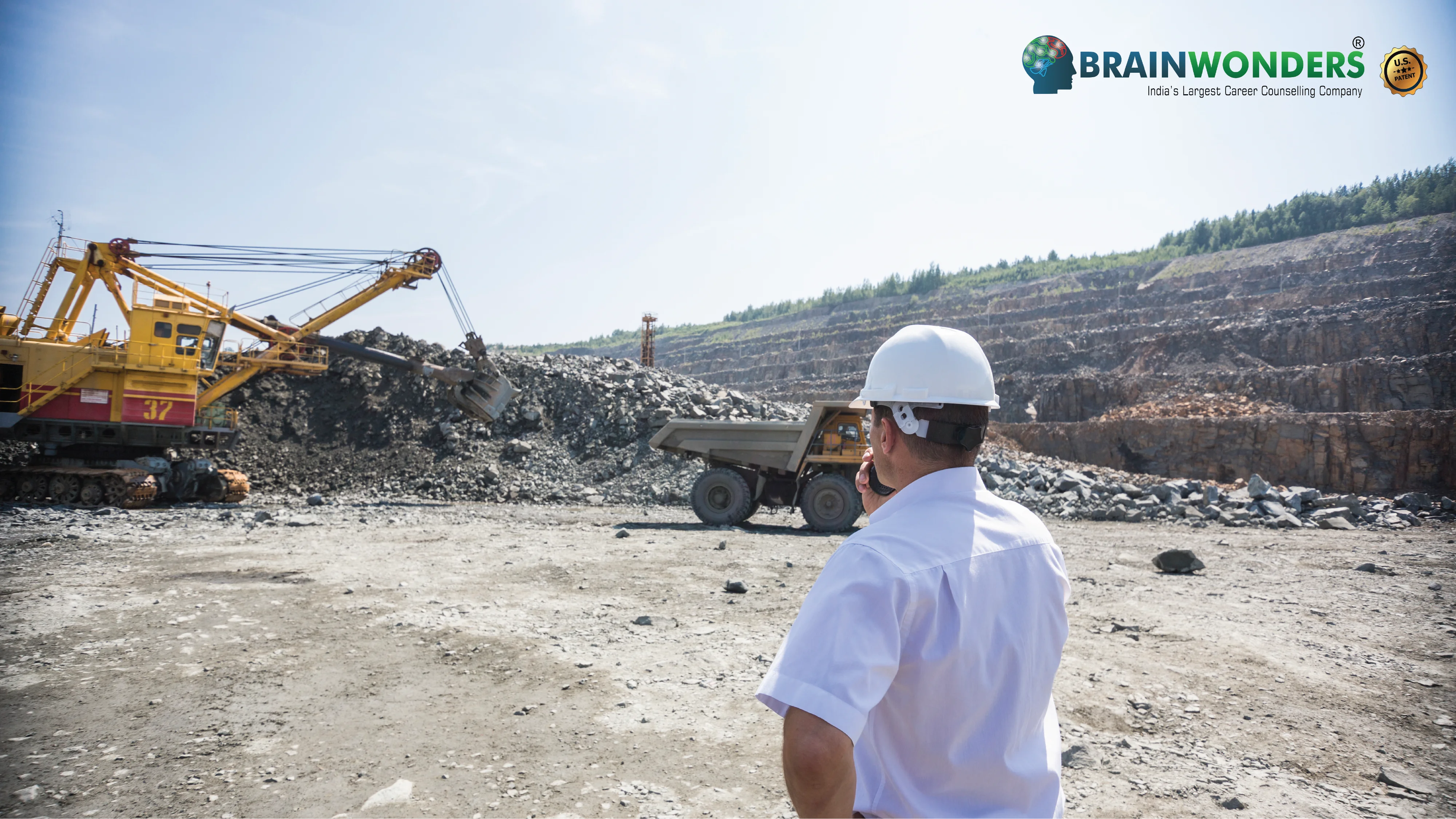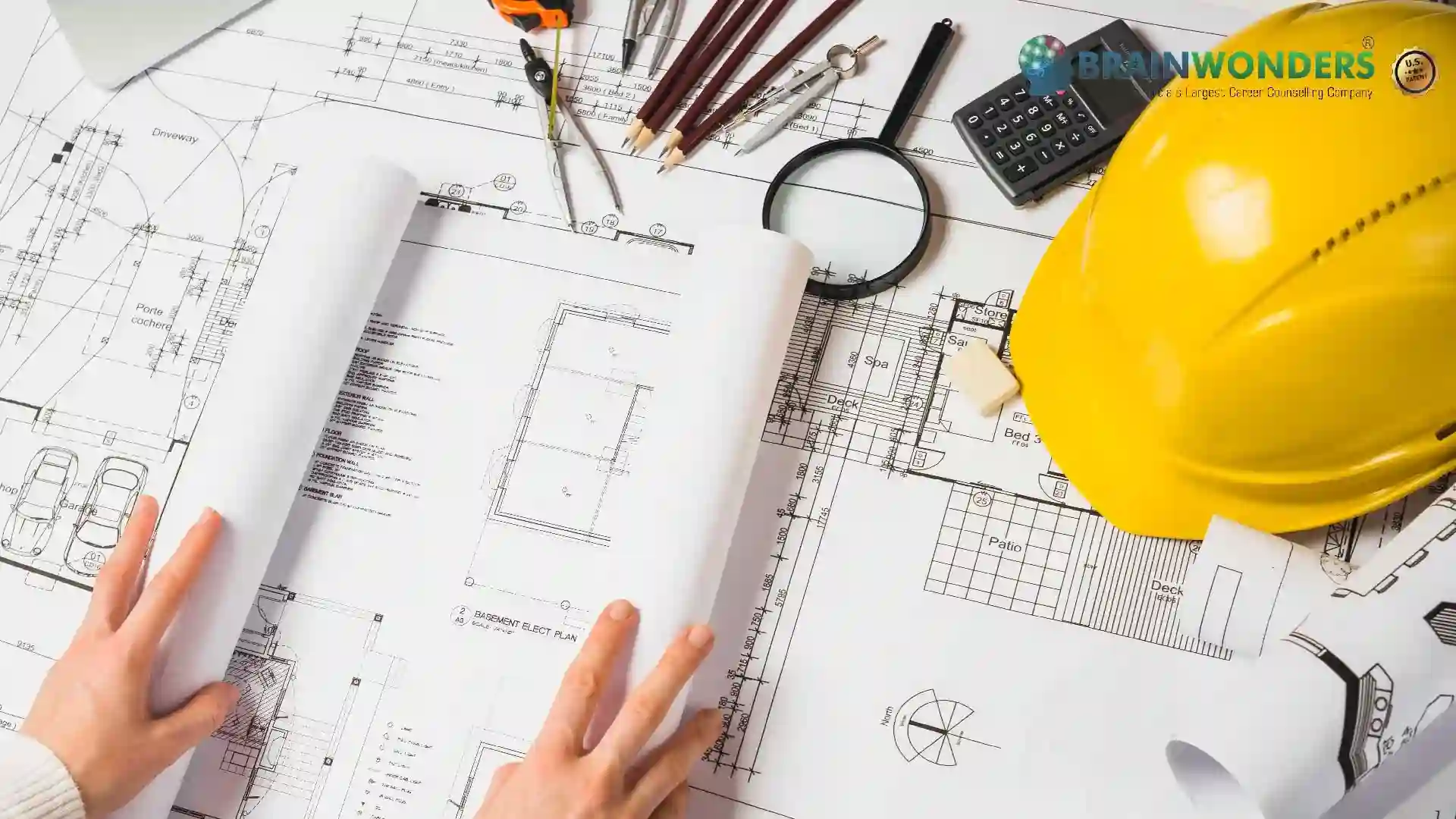How to become a Mining Safety Engineer
Overview, Courses, Exam, Colleges, Pathways, Salary

Overview
Who is Mining Safety Engineer ?
Mining safety engineers are the one who practices and apply their knowledge of mine design to inspect the walls and roofs of mines, monitor the air quality, and examine mining equipment for possible hazards to ensure worker’s safety and maintain compliance safety regulations. A mining safety engineer investigates and inspects sites and facilities to ensure specifications or standards are met for the safety of a work environment also they look after safety of equipment, economical, and environmentally sound extraction, underground construction work. Mining Safety engineer implement, create, coordinate mine safety courses. Mining safety engineer is a professional job related to industrial and systems engineering. Mining Safety Engineer is a person who is responsible for making the work site safe for all employees in the company and maintain national health and safety standards.
Typical day at work
What does Mining Safety Engineer do?
A Mining Safety Engineer is responsible for ensuring the safety and well-being of workers, equipment, and the environment in mining operations. Their primary focus is identifying potential hazards, assessing risks, and implementing safety measures to prevent accidents and injuries. Here's an overview of what a Mining Safety Engineer does:
- Risk Assessment: Conduct thorough assessments of mining sites to identify potential safety hazards, such as unstable ground, hazardous materials, equipment malfunctions, and inadequate ventilation.
- Safety Inspections: Regularly inspect mining facilities, equipment, and processes to ensure compliance with safety regulations and standards. Identify areas that require improvements and recommend corrective actions.
- Safety Plans and Protocols: Develop and implement safety plans, protocols, and procedures that outline how workers should operate in various scenarios, from routine tasks to emergencies.
- Training and Education: Provide safety training and education to mining personnel on emergency procedures, proper equipment use, hazard recognition, and risk mitigation.
- Emergency Response: Develop and coordinate plans to address potential accidents, incidents, or hazardous situations. Conduct drills and simulations to ensure workers are prepared to respond effectively.
- Safety Audits: Perform comprehensive safety audits to evaluate the effectiveness of safety programs, identify deficiencies, and recommend improvements.
- Safety Culture Promotion: Foster a safety culture by promoting awareness, accountability, and adherence to safety protocols among all mining personnel.
- Regulatory Compliance: Stay updated with local, national, and international safety regulations and ensure that mining operations adhere to these standards.
- Incident Investigation: Investigate accidents, incidents, and near-misses to determine their root causes and develop strategies to prevent similar occurrences.
- Safety Equipment Evaluation: Evaluate and recommend using safety equipment, protective gear, and technologies to enhance worker safety and minimize risks.
- Data Analysis: Analyze data related to safety incidents, near-misses, and equipment failures to identify trends and areas for improvement.
- Collaboration: Work closely with mine operators, supervisors, and regulatory agencies to ensure safety measures are properly implemented and maintained.
- Environmental Protection: Address environmental concerns related to mining activities, such as waste management, water quality, and air emissions, to minimize the impact on ecosystems.
- Community Relations: Engage with local communities and stakeholders to address safety concerns, provide information, and ensure that mining operations are conducted responsibly.
- Continuous Improvement: Continuously assess and improve safety programs based on feedback, new technologies, and evolving safety standards.
Abilities and Aptitude needed
What are the skills, abilities & aptitude needed to become Mining Safety Engineer?
Becoming a successful Mining Safety Engineer requires technical expertise, strong interpersonal skills, and a deep commitment to ensuring the safety and well-being of mining operations and personnel. Here are the essential abilities, skills, and aptitudes needed:
- Technical Knowledge: A solid understanding of mining processes, equipment, geology, and safety regulations is essential. Proficiency in safety management systems, risk assessments, and hazard identification is crucial.
- Analytical Thinking: Mining Safety Engineers must analyze complex data, assess potential risks, and develop effective safety strategies. Strong analytical skills are necessary to identify safety gaps and propose solutions.
- Attention to Detail: Paying meticulous attention to detail is vital when conducting safety inspections, audits, and risk assessments to identify potential hazards and ensure compliance with safety protocols.
- Problem-Solving: Mining Safety Engineers must identify safety challenges, develop innovative solutions, and adapt to evolving situations to create and implement effective safety measures.
- Communication Skills: Clear and effective communication is crucial to convey safety protocols, policies, and recommendations to diverse audiences, including miners, management, and regulatory authorities.
- Leadership and Collaboration: Mining Safety Engineers often work with multidisciplinary teams. Strong leadership and collaboration skills are necessary to engage stakeholders, lead safety initiatives, and foster a culture of safety.
- Regulatory Knowledge: Staying updated with local and international safety regulations, standards, and best practices is essential to ensure compliance and promote a safe work environment.
- Problem Identification: Identifying potential safety hazards and risks is vital. This involves being observant, proactive, and keen eye for unsafe conditions.
- Adaptability: Mining environments can be dynamic and challenging. Mining Safety Engineers must be adaptable to changing conditions, unexpected incidents, and emerging safety technologies.
- Crisis Management: In emergencies, Mining Safety Engineers must remain calm, make quick decisions, and implement effective emergency response plans to protect lives and property.
- Ethical Mindset: Prioritizing safety over all else and maintaining a strong sense of ethics is crucial for the well-being of workers and the community.
- Continuous Learning: Staying up-to-date with the latest safety technologies, regulations, and industry trends is essential to provide the best safety solutions.
- Physical Fitness: Some aspects of the role may require physical fitness and the ability to navigate challenging terrains and mining sites.
- Computer Skills: Proficiency in using software for data analysis, safety modelling, and documentation is essential for efficient safety management.
Salary
Salary for Mining Safety Engineer?
Salary of a Mining Safety Engineer is as follows :
- Minimum Monthly Salary for an Entry-Level Mining Safety Engineer: The starting salary for an entry-level Mining Safety Engineer can vary based on location, sector of mining, and expertise. In India, novice Mining Safety Engineers may earn approximately INR 15,000 to INR 25,000 per month as they embark on their careers, contributing to safety assessments and risk management in mining operations.
- Maximum Monthly Salary for Experienced Mining Safety Engineers: Experienced Mining Safety Engineers, particularly those who have demonstrated proficiency in implementing safety measures, overseeing safety protocols, or specializing in specific mining sectors, have the potential to earn a higher monthly salary. Their earnings could range from approximately INR 40,000 to INR 1,00,000 or more, reflecting their advanced skills and significant contributions to ensuring safe mining practices.
- Annual Salary Range for Junior and Accomplished Mining Safety Engineers: Starting with limited experience, Junior Mining Safety Engineers might anticipate a yearly salary ranging from approximately INR 1.8 lakhs to INR 3 lakhs. As Mining Safety Engineers accumulate substantial expertise, gain exposure to different mining environments, and excel in their role, they can aim for an annual income from INR 4.5 lakhs to INR 12 lakhs or beyond.
- Highest-Paying Job Opportunities and Scope: Lucrative career prospects for Mining Safety Engineers are often available in the mining, oil and gas, construction, and environmental sectors. Those specializing in specific mining safety protocols, risk assessment, and safety management systems have a higher earning potential. The role's scope is promising, as Mining Safety Engineers play a critical role in preventing accidents, ensuring regulatory compliance, and promoting worker well-being. With increasing emphasis on sustainable mining practices, technological advancements, and safety regulations, the demand for skilled Mining Safety Engineers is expected to rise significantly. This growth offers substantial opportunities for career advancement, specialization, and contributing to safe and responsible mining operations.
Pathways
How to become an Mining Safety Engineer?
Entrance Exam
Entrance Exam for Mining Safety Engineer ?
To enroll into a Bachelor's Program in Mining Safety Engineer, it is essential for the aspiring candidate to clear entrance exams conducted by various educational institutes. Most widely conducted entrance exams are IITJEE Main/AIEEE/BITSAT/JEE Advanced/AMIE/CET/National level/State level/ VITEEE/ AP & TS EAMCET.
Courses
Which course I can pursue?
Best Colleges
Which are the best colleges to attend to become an Mining Safety Engineer?
Industries
Which Industries are open for Mining Safety Engineer?
Mining Safety Engineers play a critical role in ensuring the well-being of workers and the safe operation of mining sites. Their expertise is valued across various industries related to mining and resource extraction. Some of the sectors that offer opportunities for Mining Safety Engineers include:
- Mining Companies: Mining companies directly employ mining safety engineers to oversee safety protocols, conduct risk assessments, and implement safety measures in underground and surface mining operations.
- Oil and Gas Extraction: Mining safety engineers can work in the oil and gas industry, ensuring the safety of workers involved in exploration, drilling, and extraction activities.
- Metals and Minerals Processing: Mining safety engineers may ensure the safety of processing plants where minerals are refined and processed, such as smelting, refining, and mineral beneficiation facilities.
- Consulting Firms: Engineering consulting firms offer services to various industries, including mining. Mining safety engineers may work as consultants, providing expertise on safety regulations, risk assessments, and safety management systems.
- Government Agencies: Mining safety engineers can find employment with government regulatory bodies overseeing mining operations and enforcing safety standards.
- Research and Development: Some mining safety engineers contribute to research and development initiatives to improve safety technologies, equipment design, and mining practices.
- Construction and Engineering Companies: Mining safety engineers with expertise in safety protocols and risk management may find roles in construction and engineering firms involved in mining projects.
- Environmental and Sustainability Organizations: Mining safety engineers may work for organizations focused on environmental protection and sustainable mining practices, ensuring that mining activities comply with environmental regulations.
- Educational Institutions: Experienced mining safety engineers may pursue careers in academia as professors or researchers, contributing to the education and training of future engineers in the field.
- Manufacturing Companies: Companies that manufacture mining equipment and safety gear may hire mining safety engineers to provide expertise in designing and producing safe and effective mining tools.
- Health and Safety Organizations: Organizations dedicated to occupational health and safety may employ mining safety engineers to guide workplace safety standards and best practices.
- Mining Associations: Industry associations related to mining and mineral extraction often hire experts, including mining safety engineers, to provide insights, conduct workshops, and contribute to industry development.
internship
Are there internships available for Mining Safety Engineer?
Internship opportunities for aspiring Mining Safety Engineers can provide valuable hands-on experience and insights into the field. While internships in this specific role may vary, here are some potential avenues to explore:
- Mining Companies: Large mining corporations often offer engineering students interested in safety and risk management internships. Interns may assist in conducting safety assessments, developing safety plans, and monitoring compliance.
- Mining Safety Consulting Firms: Companies specializing in safety consulting for mining operations may offer internships where students can learn about safety regulations, conduct site visits, and assist in safety audits.
- Government Agencies: Regulatory bodies responsible for mining operations may have internship programs focused on safety compliance, inspections, and enforcement.
- Engineering and Environmental Consultancies: Firms that provide engineering and environmental consulting services to the mining industry may offer internships in risk assessment, safety planning, and environmental impact assessment.
- Mining Equipment Manufacturers: Companies that manufacture mining equipment and safety gear may offer internships focused on designing, testing, and evaluating safety equipment and technologies.
- Mining Associations: Industry associations related to mining and safety may offer internship opportunities to students interested in learning about safety practices, regulations, and industry trends.
- Research Institutions: Universities and research institutions conducting mining safety and risk management studies may provide internship positions for students interested in contributing to ongoing research projects.
- Health and Safety Organizations: Organizations dedicated to occupational health and safety may offer internships focusing on workplace safety, hazard identification, and safety program development.
- Environmental and Sustainability Organizations: Internships with organizations focused on sustainable mining practices may involve working on safety, environmental protection, and social responsibility projects.
- Construction and Engineering Companies: Companies involved in construction and engineering projects related to mining sites may offer internships that provide exposure to safety planning and risk mitigation in a mining context.
Career outlook
What does the future look like for Mining Safety Engineer?
The future for Mining Safety Engineers is promising as industries continue to prioritize worker well-being and environmental sustainability. With increasing awareness of safety regulations and technological advancements, the demand for skilled professionals who can ensure safe mining operations is expected to grow. Mining Safety Engineers will play a crucial role in implementing advanced safety measures, risk assessments, and innovative technologies to prevent accidents and protect workers. As industries evolve, there will be opportunities for Mining Safety Engineers to contribute to sustainable mining practices, utilize data analytics for predictive safety measures, and collaborate on multi-disciplinary teams. The role's importance in maintaining compliance, reducing incidents, and promoting responsible resource extraction positions Mining Safety Engineers for a fulfilling and impactful career path.







